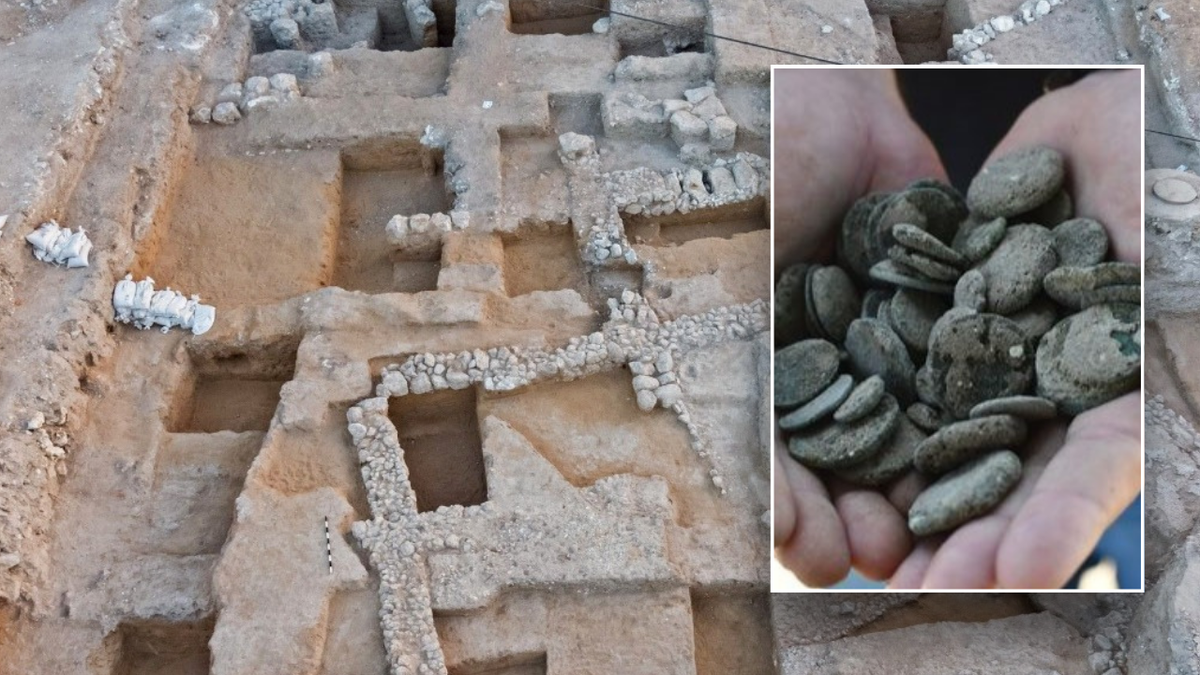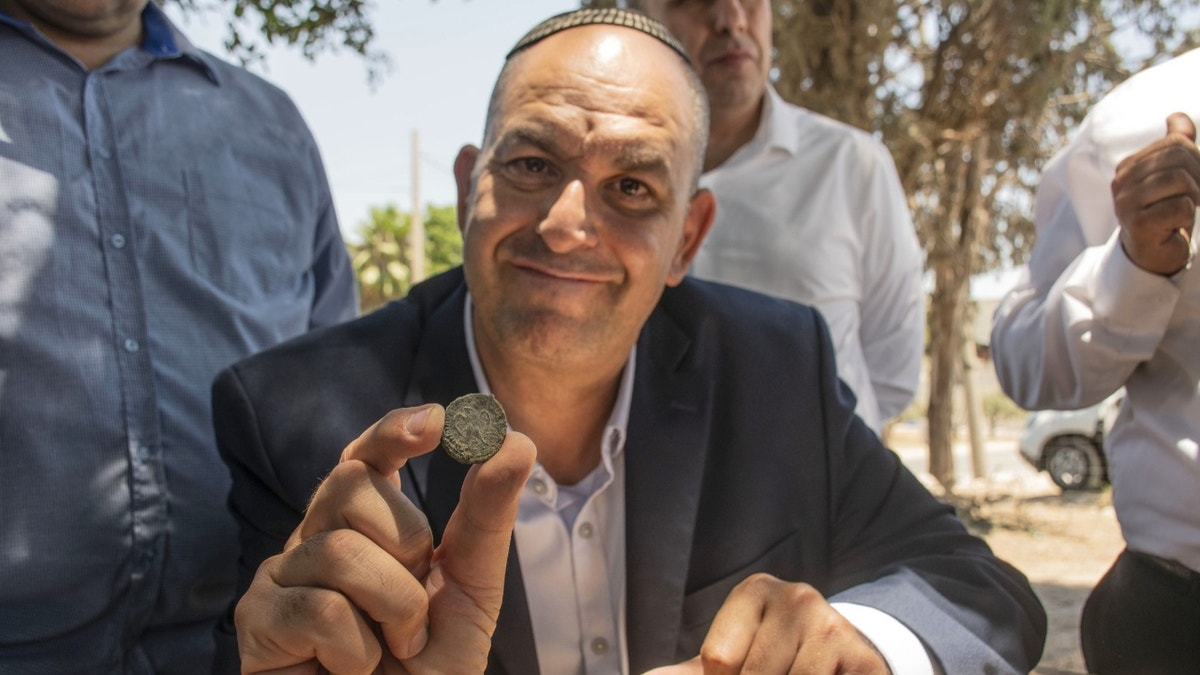Museum of the Bible's latest exhibit shows 'link between science and scriptures'
Fox News' chief religion correspondent Lauren Greene discusses NASA astronauts endorsement of the new museum on 'Fox News @ Night.'
Archaeologists in Israel recently made a "dramatic" discovery that provides invaluable historical knowledge about Jewish life in the ancient Roman era of Israel, officials said.
The Israel Antiquities Authority (IAA) announced the excavation of a site in Lod, which is in central Israel, on Facebook on Sunday. The IAA explained that its archaeologists recently found the remains of a "destroyed Jewish public building" that once stood in Syria Palaestina, or Roman Palestine.
"Among the various finds in the building were impressive stone and marble artifacts; Greek, Hebrew and Latin inscriptions, and one inscription bearing the name of a Jewish man from a priestly family, which is still being studied," the IAA said.
"These inscriptions, coupled with the complete absence of pig bones from the bone assemblage uncovered in this site, attest to this building’s association with the Jewish community."
ARCHAEOLOGISTS SURPRISED BY 'INTRIGUING' ART DRAWN BY CHRISTIAN PILGRIMS 1,500 YEARS AGO

The Israel Antiquities Authority recently uncovered a cache of invaluable ancient coins during an excavation. (Israel Antiquities Authority/Facebook)
Notably, excavators found a hoard of 94 coins that are roughly 1,650 years old. The IAA dates the discovery back to the Jewish revolt against Constantius Gallus, which began in 351 AD.
"The latest coins are dated from the time of the Gallus Revolt (351-354 CE)," the IAA statement explains. "Though written evidence is sparse regarding this revolt, there are texts reporting that major Jewish communities such as Lod, Zipori and Tiberias were destroyed by the forces of Roman Caesar Flavius Constantius Gallus."
The oldest coins could have been produced as early as 221 AD. Historians said the treasure was purposely hidden during the revolt.
WOMAN OUT FOR WALK STUMBLES UPON ONCE-IN-A-DECADE DISCOVERY

The buried treasure dates back to the Jewish revolt against Constantius Gallus. (Israel Antiquities Authority/Facebook)
"[They] were deliberately placed there – in the hopes of returning to collect them when the situation would calm," the IAA said.
Two of the site's excavators, Shahar Krispin and Mor Viezel, said in a joint statement that the "magnificent" building likely served as living quarters for the city's Jewish elders.
"From Talmudic writings we know that Lod was a most significant Jewish center in the aftermath of the Second Temple’s destruction in Jerusalem," the statement explained. "This building, destroyed down to its very foundation, is a clear indication that the revolt was forcefully put down with violence and cruelty, and was not simply a local uprising event, as some earlier studies contended."
CLICK HERE TO SIGN UP FOR OUR LIFESTYLE NEWSLETTER

Stone and marble artifacts were also uncovered at the excavation site, in addition to the centuries-old coins. (Israel Antiquities Authority/Facebook)
"This is the singular witness, thus far, to the extent and power of this revolt in Lod, located in the country’s center."
The mayor of Lod, Yair Revivo, called the discovery "very emotionally moving."
"[It is] another link in the chain of Lod’s Tannaitic period heritage as host to the authors of the Mishna, and to Lod’s Jewish history," the mayor said. "The finds in the area proves that Lod is one of the oldest cities in the world."
For more Lifestyle articles, visit www.foxnews.com/lifestyle.
Professor Joshua Schwartz of the Israel Antiquities Authority Council noted that the discovery also poses additional questions.
"It is difficult to determine if this magnificent building served as synagogue, study hall, meeting hall of the elders, or all three of these functions as one," Schwartz explained. "But what is clear is that the building’s size, the coin hoard, and the assemblage of archaeological finds produced by the excavation, fit well Lod/Diospolis’ description in both Jewish and non-Jewish sources as a center of Torah-true Jewish life in the Mishna and Talmud periods."

The mayor of Lod, Yair Revivo, pictured holding an ancient coin. (Israel Antiquities Authority/Facebook)
CLICK HERE FOR THE FOX NEWS APP
"Lod’s role as a leading community with elders continued from after the destruction though to this moment when it was cruelly cut down in the Gallus Revolt," Schwartz said.


